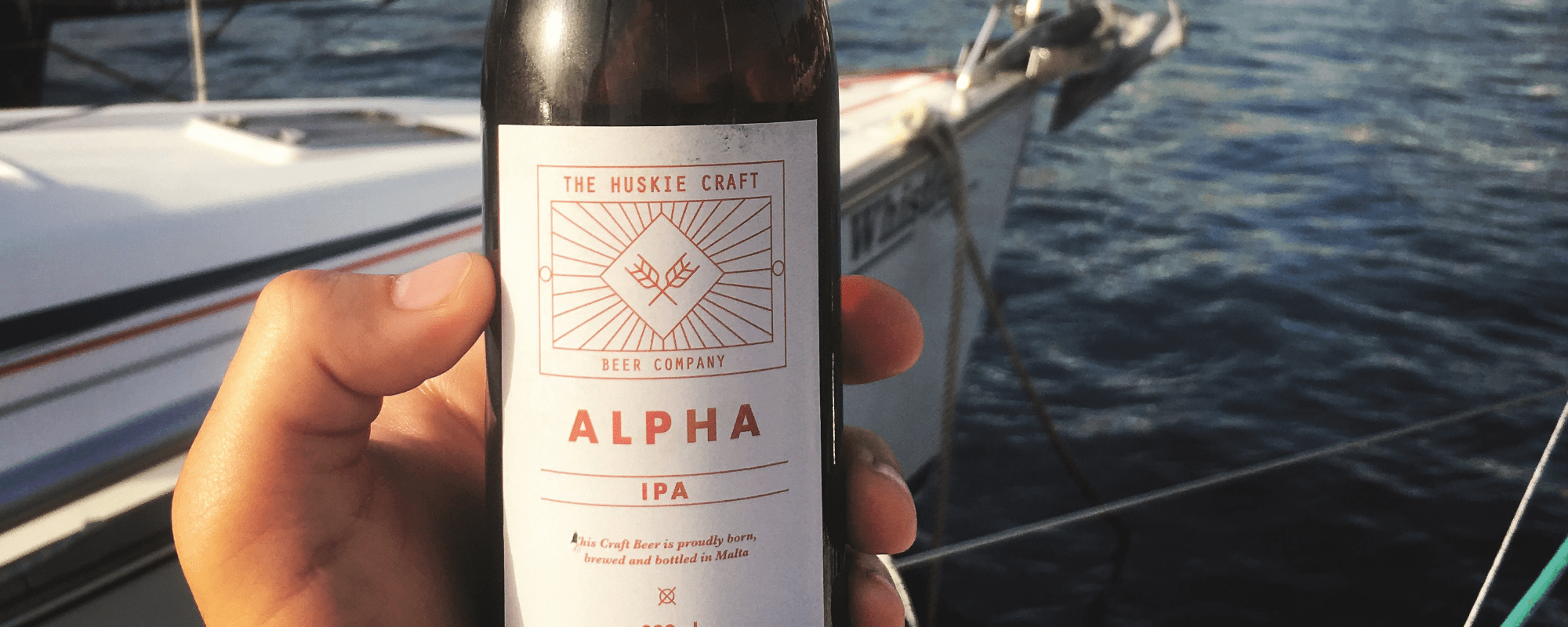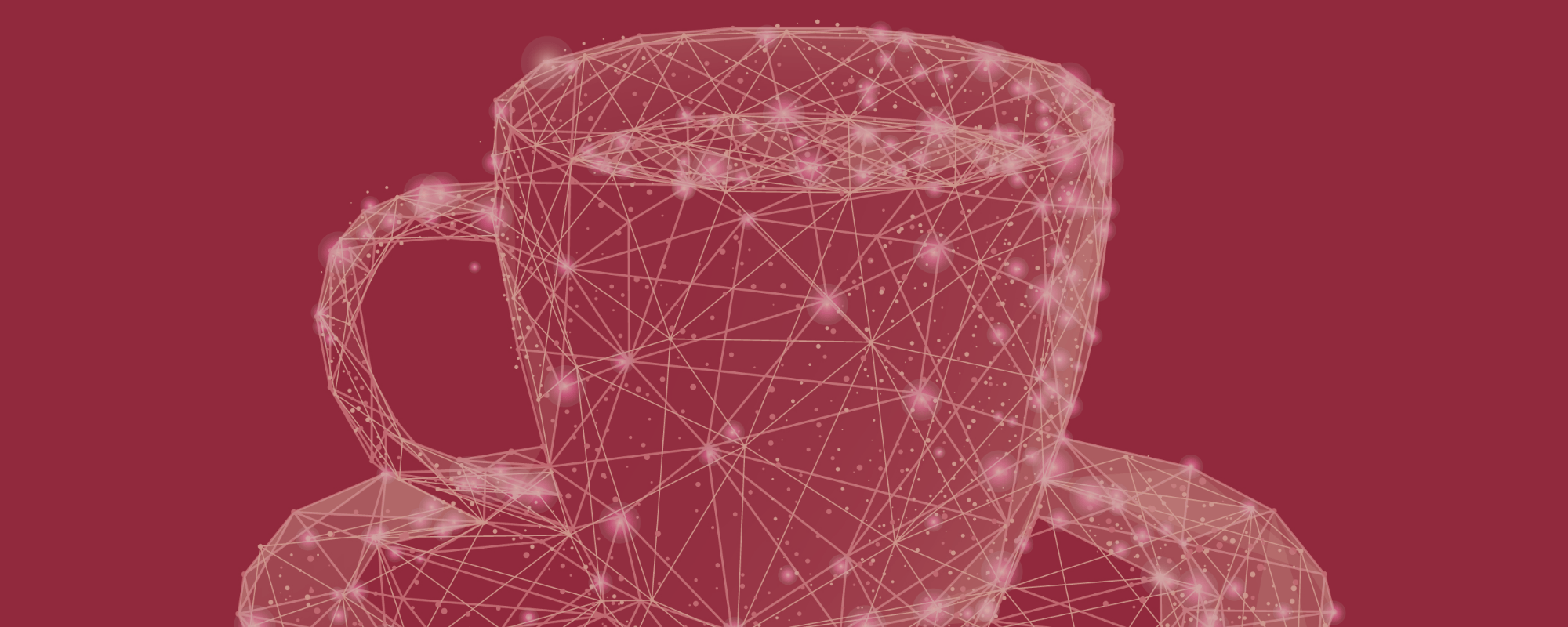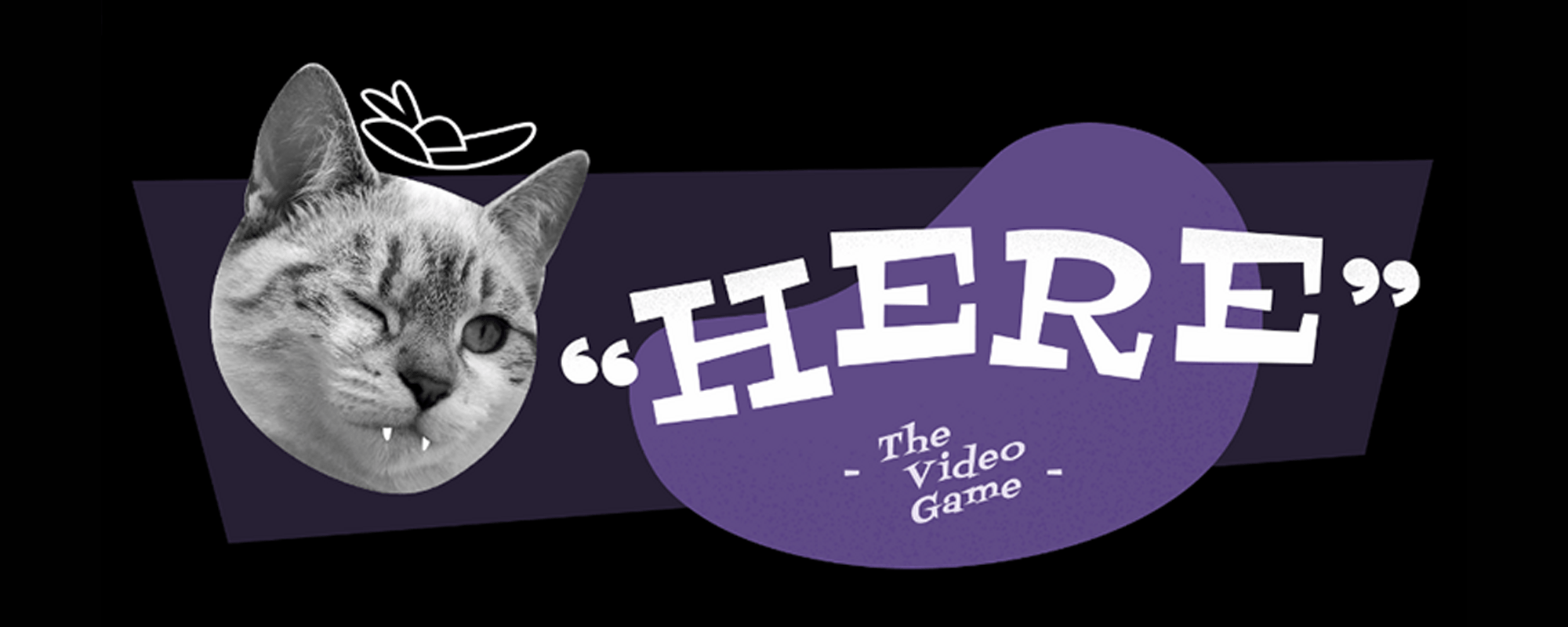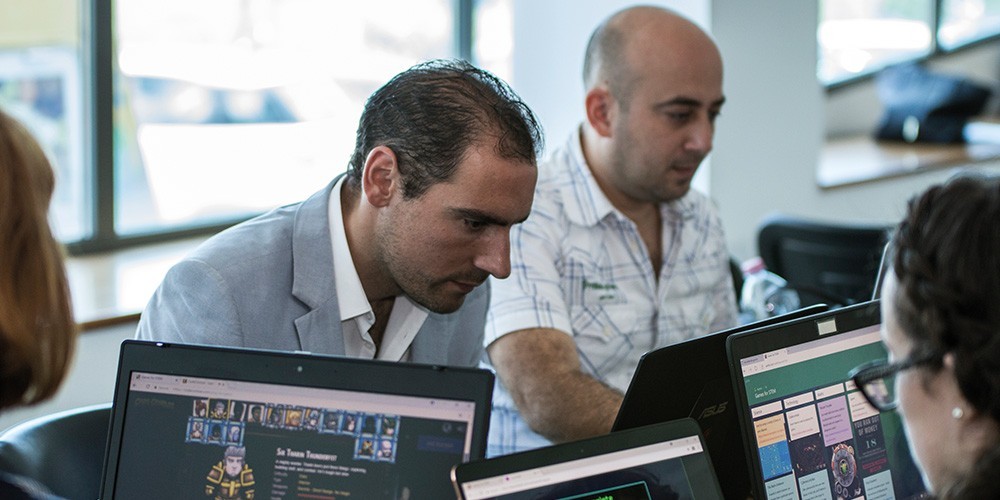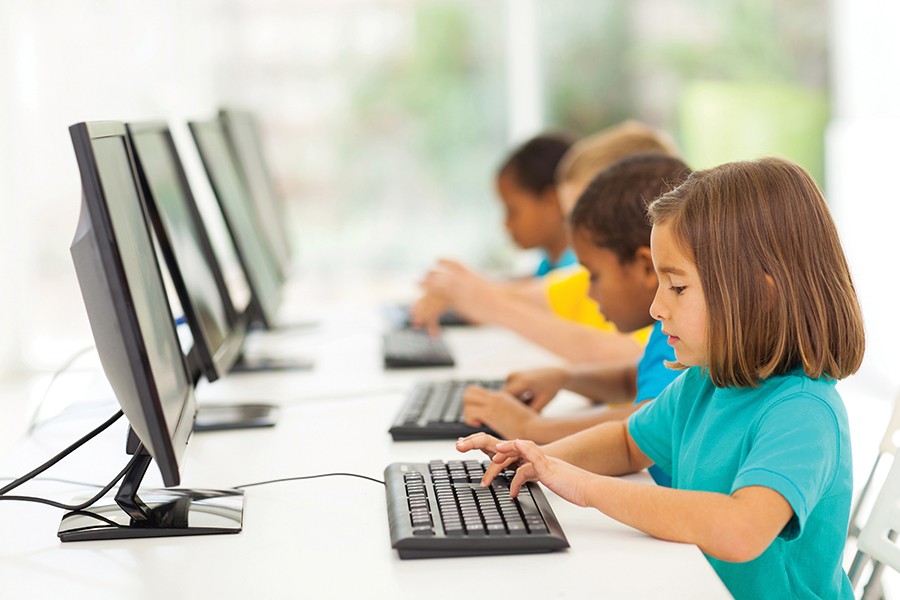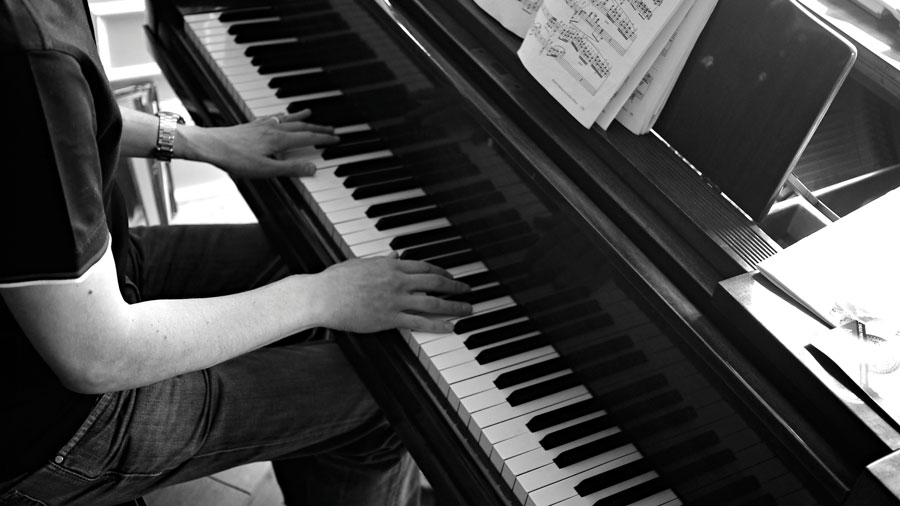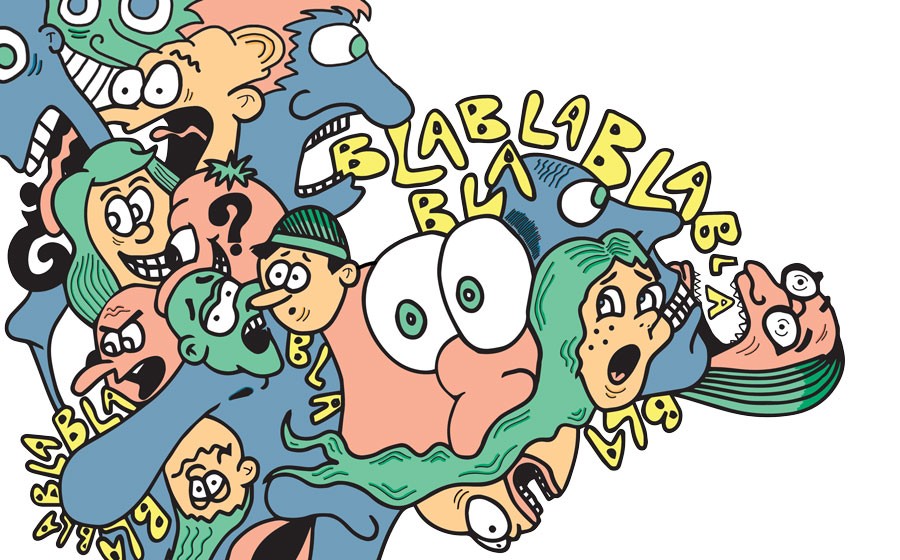If you are one of the 515 million (monthly) active users who listen to music on Spotify, then you know how music can help you get through the day. Today, Spotify has over four billion playlists to choose from whilst studying, so get your study mood on: shuffle, play, and switch the brain button on while you read about why music is an essential part of our lives!
Continue readingCrafting business from hobbies: The HUSKIE story
Put a physicist and an engineer together and what do you get? A brewery. Obviously. Cassi Camilleri sits down with Jean Bickle and Miguel Camilleri to talk about entrepreneurship, beer, and how variety really is the spice of life.
As you read this, a warehouse in a Qrendi quarry is bustling, undergoing hefty conversions as it morphs into a dream brewery. Water and electricity supply is solid, the walls have a fresh lap of white and the steel housings are in place. Now, the countdown begins until the tanks are set up. But they’re used to it. This waiting business.
The Huskie Craft Beer company was but a twinkle in their eye when Jean Bickle and Miguel Camilleri first met as workmates during a stint in Leeds, which is where they discovered a thriving craft beer scene.
‘We were part of a club at the Wharf Chambers,’ Bickle remembers. ‘It’s what we did after work. We played table soccer and tried beers.’ Learning about the process, the recipes, and the different flavours that are possible to incorporate in a beer, planted a seed in them both. ‘Eventually, when we came back home, we wanted to give brewing a shot ourselves,’ Bickle adds. And so they did.
Getting the basics down
Their first investment was in education. ‘We spent quite a bit on books and materials to learn how to brew,’ Jean says. They had the ingredients down—water, malt, yeast, and hops. Hops being the flowers of the hop plant which are used as a bittering, flavouring, and stability agent in beer. They understood the role temperature played and gained plenty of experience with identifying flavours through taste tests. Beyond this, however, they also needed to be familiar with how these ingredients interact with one another and the techniques involved in creating a beer.
They were more careful with their purse strings when building their first set up in early 2017. ‘We could have very easily gone online and found these home brewing kits. But you have to spend a lot of money to get those. And this was all coming from our own pockets. So, with Miguel being an engineer, we just bought stainless steel tanks and sheets, shaped them, and welded the parts together. We even built the control panel and electronics ourselves. Everything was done from scratch.’


This is not to say that it was all smooth sailing. ‘Sometimes you get ahead of yourself. You start rushing in your eagerness to try out new things. Which is fine. But sometimes you have to take a step back and go back to basics. We keep each other in check,’ Jean notes, smiling. ‘We both come up with radical ideas on how to approach the task at hand, but you can’t do everything at once, otherwise you get careless.’
‘You’ve also got to be adaptable and not follow others’ rules to the dot. Malta’s ambient conditions and accessible raw materials make brewing harder than in many other countries. With the right technique though, it’s definitely possible,’ Miguel points out.
Creative thinking meets business
Initially, it was all about making beer. ‘Our focus was that the quality of the process should be done to a certain standard,’ Jean says, but the creative element soon started becoming a priority. ‘Now we have shifted to the actual product being top quality. You have loads of recipes online if you want to find them, but we wanted to create our own.’
From a business standpoint, finding what makes you unique is an essential part of building a company. What is the value you are bringing to your client base that others are not?
Huskie’s approach harkens back to the reason the boys started the company. They loved beers and wanted to continuously try new ones. When they had the brewing process perfected, it was time to start being experimental.
‘We started thinking about creating recipes we hadn’t seen before, with flavours we hadn’t seen anyone use before. We made beers using Maltese strawberries for example, and we also produced a range of beers inspired by the flavours of the traditional qagħaq ta’ l-għasel (honeyring).’ Of course this isn’t as simple as adding some extra water to a cake mix.
‘Experimentation brings about its own set of challenges. Some ingredients have their own sugars, so including them in the beer recipe drives the yeast crazy.’ And when Jean says crazy, he means it. ‘If we don’t get everything right, the pressure in the bottle can build up and they literally explode. We’ve had this happen a few times,’ Jean admits. ‘We call them molotovs,’ Miguel grins.

But even with the added cleaning time, all’s well that ends well. This curiosity has given Huskie a very niche service they can provide to clients. ‘We can create beers exclusive to our clients. If someone comes along and tells me I like cinnamon or whatever, we can create something specifically for them.’
Coming up with each new recipe involves another process of trial and error, tinkering, and perfecting. ‘When we come up with a new recipe, we usually come up with three different versions and we taste each different beer on the same day. We write down notes, we compare, and if there is some kind of consensus, we move onto that.’ Now, Jean and Miguel have a spreadsheet with all the beers they produce, each marked with a rank. So far, over the course of two years, they’ve already finalised 11 beer recipes and released four to the market!
No to mass markets
The culture behind craft beer is one that is very close to Jean and Miguel’s hearts. This is not about making three beers, sticking to them, and selling them en masse. They want to keep the personal touch, the Maltese identity in their product, while pushing boundaries and trying new things. ‘So our philosophy is get this beer now because it won’t be around in six months. We want to continue creating.’

Of course, this isn’t always easy. And Jean is the first to say it. ‘It’s hard letting go of a good beer,’ he admits. ‘Even we fall in love with some of the recipes. But you have to come from a place of abundance. We know we can continue to create good beers. And we will.’
Now they’re in the growing phase. Setting themselves up to expand their brewing power. With the new brewery they’ll soon be able to increase production tenfold. ‘Then it’s about creating our own events. Entering competitions abroad. We want to put Malta on the map.’
‘We’ve already spent a year working on the new brewery, so we’ve had a lot of time to think about what we want to do and where we want to go, and this is essential in building a business that is sustainable. You have to do things right and really think about things properly,’ Miguel asserts.
This measured attitude has definitely worked in Huskie’s favour. Research led to new funding opportunities. ‘Miguel found out about [the] TAKEOFF [business incubator] and we met Joe Bartolo. He really motivated us and was of great help in the vital early stages,’ Jean says. After a few months Huskie was awarded a TOSFA fund that they used to purchase more equipment, allowing them to try more recipes and scale up production. They followed this up with some EU funding applications. ‘We [obtained] funding to purchase more equipment for the brewery,’ he notes.
Jean is quick to mention the help and support from their family and friends.
‘We got a lot of help. Really a lot. Miguel’s father helped us with the building of the brewery. His uncle did all the electricity. And Connie, Miguel’s mum is a star. Miguel did all the planning, plumbing, and the majority of the rest. He’s even got the scars to prove it! I painted a wall. It was a real team effort,’ Jean laughs.
Maintaining Balance
For such a new business, Huskie is already growing with leaps and bounds. But hours in the day are limited and questions about priorities and goals are already circling. ‘Managing Huskie at its current level already takes up loads of our time, and we’ve had to sacrifice a lot from our private lives,’ Jean says. ‘But in doing that, Miguel and I manage to run it whilst still holding full time positions. Where it will take us in the future—well, who knows? We wouldn’t mind employing people to take care of logistics and cleaning for example. We’re also looking into hiring a driver to take care of distribution for us.’

The love they have for medical physics has in no way diminished. ‘Miguel and I both love what we do. Working in healthcare is extremely satisfying and keeps us well in check on life’s priorities,’ Jean says. ‘And that is just as much our passion as brewing beer is. But I believe that if you work hard enough at something, and if you love it enough, you’ll find the time for it.’
‘Everybody will say you’ll enjoy it once you get there. But for us it’s more important to enjoy what we’re doing while getting there. God forbid Miguel and I weren’t friends. We’d kill each other with all the time we spend in the same room. For us, the brewing thing works because it’s part of the development of our friendship. We brew, drink, chat, and joke. It’s about enjoying the process. Not just tunnel vision towards the end goal.
Science and coffee, anyone?
In an age of misinformation, having a grasp on current affairs and research is essential for us to be active, responsible citizens. Gillianne Saliba writes about the dire need for more dialogue and engagement from citizens and scientists alike.

For many, science is far removed. It’s just a subject they had to take at school. Or the star of crazy stories on newspapers, or videos and memes on social media. Opposing views are a dime a dozen. And sometimes it’s very hard to discern between them; what’s right? what’s wrong? ‘It’s complicated,’ they say, ‘it’s hard’, and so most people move on, letting others do all the talking. As a result, science and citizens have had a rocky relationship. But when the issues being discussed relate to health, technology, and our environment, that is, when they affect us directly, we need to be able to engage.
Science Communication (SciComm for short) can offer a solution to this problem.
SciComm can take many forms. Articles, films, museum exhibitions; you name it. In the wake of a scientific knowledge-gap in the community, SciComm has taken root and has been rapidly growing over the last 40 years. Researchers want to share their ideas and get citizens’ input, gauge interest, and see what others have to say.
Enter Malta Café Scientifique.
To create a safe space where people can chat about science, Malta Café Sci organises monthly science communication events in Valletta where researchers and professionals discuss topics of interest with attendees. Entrance is completely free and open to all, which attracts a diverse audience.

What makes Malta Café Sci special is how it prioritises the public, putting their learning experience first. The events are tailored to them. Speakers keep their talks short and succinct, taking complex scientific concepts and breaking them down, discussing how the research can impact society. The Q&A session that follows is often far longer than the talk itself, opening up a dialogue within the audience. The elitist mantra of ‘it’s complicated’ is so far gone that talks, and the following question and answer portion of the evening, are put to bed with closing drinks where speakers and audience members can have one-on-one time, discussing the topic of the day.
I have been volunteering as an organiser with Malta Café Scientifique for the last nine months. Through the experience, I have gained marketing and public speaking skills.
More importantly, I have had the privilege of a front row seat to pivotal moments in people’s lives—the moment when perception shifts.
I’ve often had audience members come up to me after an event to tell me how the talk changed their ideas. How they are learning to be more receptive but also critical about what they learn and read online. Some point out how they usually steer clear of such events, with many wrongly thinking they aren’t smart enough for them, only to find that they not only understand, but can also participate.
Aside from all this, Malta Café Scientifique is also conducting its own research. Led by Café Sci’s project manager Danielle Martine Farrugia, we are evaluating and interviewing different science communicators about their practices. We’re also evaluating the initiative to understand its contribution to science communication in Malta.
What we can already see is that Malta Café Sci is living, breathing proof of how people can come together when dialogue is open and welcoming. It is empowering local researchers to share their findings with citizens while giving community members the chance to learn and weigh in on work that may have ramifications for them. Where a learning process is no longer from expert to layman, but a continuous sharing of information in both directions.
Note: For more about Malta Café Scientifique’s next events, or if you want to get involved, see its Facebook page or Instagram @maltacafesci. Or email us on cafesci@mcs.org.mt.
We’re exploring Here!
If you had a rich malleable canvas that could flip rules on their heads and expose truths we take for granted, wouldn’t you use it? Jasper Schellekens writes about the games delving deep into some of our most challenging philosophical questions.
The famous Chinese philosopher Confucius once said, ‘I hear and I forget. I see and I remember. I do and I understand.’ Confucius would have likely been a miserable mystic in modern mainstream education which demands that students sit and listen to teachers. But it’s not all bad. Technological advancements have brought us something Confucius could never have dreamed of: digital worlds.
 A digital world offers interaction within the boundaries of a created environment. It allows you to do things, even if the ‘thing’ amounts to little more than pressing a key. Research at the Institute of Digital Games (IDG) focuses on developing a deeper understanding of how these concepts can be used to teach through doing by looking at people interact with gameworlds, studying how games can impact them (Issue 24), and designing games that do exactly that.
A digital world offers interaction within the boundaries of a created environment. It allows you to do things, even if the ‘thing’ amounts to little more than pressing a key. Research at the Institute of Digital Games (IDG) focuses on developing a deeper understanding of how these concepts can be used to teach through doing by looking at people interact with gameworlds, studying how games can impact them (Issue 24), and designing games that do exactly that.
Doing it digital
Two millennia later, John Dewey, one of the most prominent American scholars of the 20th century, proposed an educational reform that focused on learning through doing and reflection instead of the ‘factory model’ that was the norm. Dewey’s idea was embraced, and has become a pedagogical tool in many classrooms, now known as experiential learning.
Let’s not pretend that Confucius was thousands of years ahead of his time—after all, apprenticeships have always been an extremely common form of learning. But what if we were to transplant this method of experimentation, trial and error, into a digital world?
It would allow us to do so much! And we’re talking about more than figuring out how to plug in to Assassin’s Creed’s tesseract or getting the hang of swinging through New York City as Spiderman. While these are valuable skills you don’t want to ignore, what we’re really interested in here are virtual laboratories, space simulations, and interactive thought experiments.
Games make an ideal vehicle for experiential learning precisely because they provide a safe and relatively inexpensive digital world for students to learn from.
Think of the value of a flight simulator to train pilots. The IDG applied the same idea to create a virtual chemistry lab for the Envisage Project. They threw in the pedagogical power tools of fun and competition to create what’s known as serious games.
Serious games are at the heart of many of the IDG’s research projects. eCrisis uses games for social inclusion and teaching empathy. iLearn facilitates the learning process for children with dyslexia and Curio is developing a teaching toolkit to foster curiosity. However, the persuasive power of videogames stretches further than we might think.
In a videogame world, players take intentional actions based on the rules set by the creators. These ‘rules’ are also referred to as ‘game mechanisms’. Through these rules, and experiential learning, players can learn to think in a certain, often conventional, way.
Which brings us to HERE.

Prof. Stefano Gualeni is fond of using games to criticise conventions: in Necessary Evil a player takes on the role of an NPC (Non Player Character) monster, in Something Something Soup Something the definition of soup is questioned, while in HERE Gualeni breaks down what ‘here’ means in a digital world.
What’s Here?
 HERE sees the player explore the philosophical concept of ‘indexicality’, the idea that meanings depend on the context in which they occur. A fitting example is the extended index finger, which means different things depending on where it is placed and what movement it makes. Point one way or another to indicate direction, place over the lips to request silence, or shake it from side to side to deny or scold.
HERE sees the player explore the philosophical concept of ‘indexicality’, the idea that meanings depend on the context in which they occur. A fitting example is the extended index finger, which means different things depending on where it is placed and what movement it makes. Point one way or another to indicate direction, place over the lips to request silence, or shake it from side to side to deny or scold.
The game explores the word ‘here’ in the digital world. It sheds light on how much we take for granted, and how a lot of concepts are not as straightforward as we think.
HERE you play as ‘Wessel the Adventurer’, a cat of acute perception that is sent on a quest by a wizard to find magic symbols and open an enchanted cave. Playing on the tropes of role-playing games, the expectations of the adventurer are thus framed in a conventional manner, but not everything is as it seems.
By subverting players’ expectations of role-playing games, they will have the opportunity to discover what they have been (perhaps unwittingly) taught. They will be confronted with a puzzle involving the many versions of ‘here’ that can co-exist in a digital world. Among their prizes is Gualeni himself performing a philosophical rap.
Explorable Explanations
Experiential learning isn’t the only way to learn, but video games, with their interactivity and ability to manipulate the gameworld’s rules with ease, offer a ripe environment for it. The digital realm adds a very malleable layer of possibility for learning through doing and interacting with philosophical concepts. HERE is not alone in this approach.
Words often fall short of the concepts they are trying to convey. How do you explain why people trust each other when there are so many opportunities to betray that trust? Telling people they have cognitive biases is not as effective as showing them acting on those biases.
Explorable Explanations is a collection of games curated by award-winning game developer Nicky Case that dig into these concepts through play. The Evolution of Trust is one of them, breaking down the complex psychological and social phenomena contributing to the seemingly simple concept of trust in society. Adventures in Cognitive Biases is able to show us how we are biased even when we don’t think we are. HERE delves into our understanding of language and the world around us, showing us (instead of telling us) that learning doesn’t have to be boring. Now go learn something and play HERE.
To try the game yourself visit www.here.gua-le-ni.com
Science, dance, and Scotland
What if I told you that I could explain why the sky is blue through dance? All I would need is a fiddle player, a flautist, and a guitarist. By the end of it, we would all be dancing around like particles, hopefully with a better understanding of how the world around us works. This is exactly what neuroscientist and fiddle player Dr Lewis Hou does on a daily basis. Sitting through a boring science class with a teacher blabbing on about how important the information is might be a scene way too familiar for all of us. The science ceilidh (a traditional Scottish dance) aims to combat this misconception that science is all about memorising facts. Bringing people together to better understand and represent the processes within science through interpretative dance and other arts, the ceilidh has been proving a fruitful way of engaging people who would normally not be interested in science or research. ‘For us, that’s a really important guiding principle— reaching beyond those who usually engage,’ says Hou.
It all starts by bringing everyone together in one room. Researchers, musicians, and participants all get together. Researchers kick off the conversation by explaining what their work is and why it is relevant. Hou then helps the rest of the group break the scientific process down into its fundamental steps, be it photosynthesis, cell mitosis, or the lunar eclipse. The next step is translating each of the steps into a dance. And this is where everyone gets involved.
For us, that’s a really important guiding principle— reaching beyond those who usually engage.
Thinking back on how the idea came together, Hou says his first motivation to combine dance and science came when he was playing music and calling ceilidhs, all while attending as many science festivals as he could. ‘I realised there’s a big crossover with the spirit of folk music and dance—it’s all about participation and sharing. Everyone takes part even if they aren’t experts—and that is what we want to achieve in science communication. We want to encourage more people to feel able to participate without being scientists.’
‘Importantly, the nice thing about ceilidh dance is that they might be simple, but it also means that many people can join in and dance,’ emphasises Hou. Back in the studio, aft er having understood the science and its concepts, everyone works together to create the choreography. The science merges with their artistic interpretation. It is no longer something out of reach; it is now owned by everyone in the room.
Author: Abigail Galea
Player 1: ready to learn
Can digital games form part of the answer to dwindling attention spans in the classroom? Sara Cameron attended the ‘Playful Learning in STEM’ Seminar at the MITA data centre in June to hear entrepreneur Dr Lauri Järvilehto’s thoughts on the matter.
Our attention is constantly bombarded by the likes of mobile games, social media, Netflix, and Google. Adults are having a tough enough time focusing, let alone children sitting at their desks trying to wrap their heads around algebra and particle physics. Textbook lessons are fighting a losing battle with personalised entertainment. But there is light at the end of the tunnel. Dr Lauri Järvilehto, co-founder and chairman of Finnish startup Lighteneer, believes his team might have a solution. Games see kids experience progressive challenges. Children, as players, use diverse problem solving abilities, then receive instant feedback, satisfaction, and a sense of achievement. To ignite that same fire for games in learning, education needs to tap into that world and harness what makes it special. The feat, Järvilehto explains, is finding balance. We need games that contextualise mathematical or scientific concepts, allowing players to master these concepts, all while being engaged and having fun. A tall order.
Gamification has the potential to ease the introduction of subjects that are normally considered complex. It can make them more approachable, allowing students to grasp the basics before undertaking formal learning to further deepen their understanding.
‘Our thinking is that great learning games can work as the first spark for the love of learning in future generations. They can convey the awe and wonder you see shining in the eyes of our scientific experts as they tell us about the wonders of particle physics,’ says Järvilehto, speaking at a seminar called Playful Learning in STEM organised by the Science Centre (Ministry for Education and Employment) in collaboration with Malta Information Technology Agency and the Valletta 2018 Foundation.
But whilst digital learning is becoming all the craze, Järvilehto warns that educators should be wary of jumping on this trendy bandwagon. Technology is not a cure-all; there is no magic wand. Lighteneer aims to develop games that complement, rather than compete with, formal learning. He also believes that, even with an abundance of tech-based tools, an engaging teacher is still the best way to improve education and inspire the next generation. Games should be used as an initial spark to reel students in at the outset. ‘Perhaps kids will soon grow to think about particle physics and atoms as something as cool as collecting Pokémon.’ Game learning can be the key to unlocking students’ potential, offering a more accessible route to developing an understanding of complex topics.
To keep up with a fast-changing digital world, we must acknowledge its challenges and adapt. Games can’t solve this puzzle alone, but used in the right way, they can be a tremendously useful addition to a teacher’s toolbox.
Author: Sara Cameron
The new digital divide
Unequal access to technology and the Internet is traditionally termed the ‘digital divide’. Both are expensive, which leaves some people behind. Today the situation has changed, with 98% of minors having home Internet access in Malta. Government targets digitally-deprived students by investing hefty sums to have tech at school. However, there is a new digital divide within formal education, and this time it is not about who uses technology but how they use it.
What is the attitude toward the technology that is being used in class? What is the goal that students are using that technology to accomplish? You can have countless schools on the receiving end of whole shipments of tablets and laptops, but the sad reality is that without an effective strategy, they are unlikely to reap the full benefits of that investment.
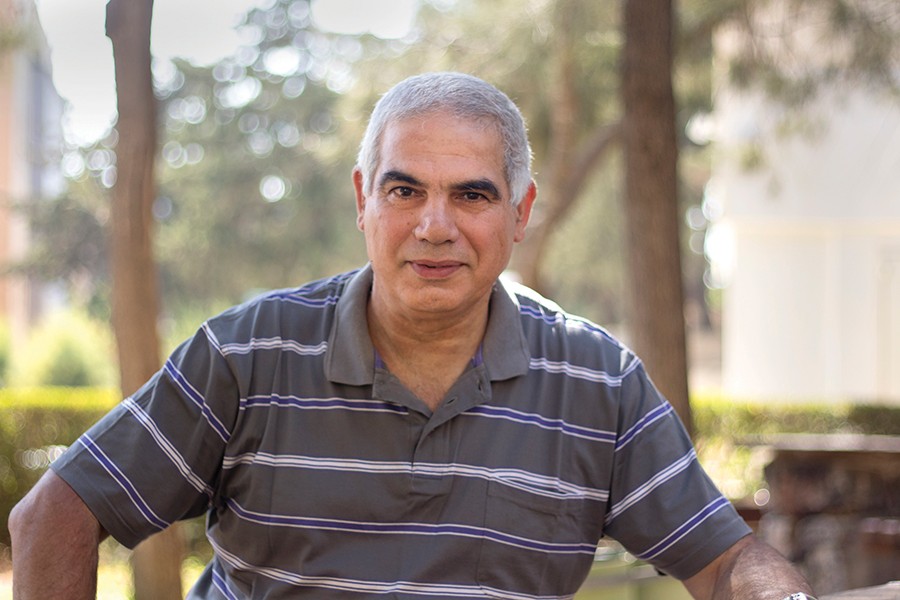
If technology is placed within a system that ignores students’ needs and is unresponsive, if not completely resistant, to new teaching and learning methods, the result is completely counterproductive. A teacher’s frustration with students being distracted by their devices is an everyday occurrence, and it needs to be addressed. The question is: Is this a technology-related problem or a more profound issue related to how humans discover and understand knowledge? Are these pedagogical conflicts arising from the presence of technology in class or from an epistemological clash between teachers’ and students’ beliefs about learning and knowledge sharing?
If we define pedagogy as ‘guidance for learning’, we need to provide guidance for a variety of learning methods. By focusing only on the ‘chalk-and-talk’ method of teaching delivery, we may actually limit access to different ways of acquiring knowledge. Besides using technology to enhance teaching, digital tools and resources need to be used to empower students: first to take over the management of their own learning, and second, to pursue different technology-enhanced learning avenues for acquiring, creating, and sharing knowledge. This gives the student better skills in digital and information (critical) literacy, in collaboration, and in networking, hence preparing them for the world of work.
To make this happen, challenges await both teachers and students. Teachers need to welcome new forms of learning, offering guidance and support rather than simply ‘giving students all the information they need to know.’ Students, on the other hand, have to overcome the mental conditioning that links learning directly to teaching so they can stand on their own two feet.
Students and teachers need to work together to adopt a more independent and customised approach to learning, enhanced and transformed through technology.
Author: Dr Philip Bonanno
Mind the Gap
The world is changing. Technologies are developing rapidly as research feeds the accelerating progress of civilisation. As a result, the job market is reacting and evolving. The question is: Are people adapting fast enough to keep up? Words by Giulia Buhagiar and Cassi Camilleri.
Mur studja ha tilħaq.’ (Study for a successful future.)
From an early age, most Maltese students are conditioned to think this way. You need a ‘proper education’ to land yourself a ‘good job’. But students graduate, and with freshly printed degrees in hand, they head into the job market only to be disappointed when the role they land seems unrelated to their degree. Yet vacancies are ready for the taking; there are many unfilled jobs in the STEM fields, which create 26% of all new vacancies according to recent research from the National Statistics Office.
So, if there are vacancies available, what is the problem? A skills gap.

Academic qualifications do not guarantee that graduates have the right skills for work. At a conference addressing the skills gap organised by the Malta University Holding Company (MUHC) and the Malta Business Bureau (MBB), Altaro Software co-founder and CEO David Vella confirmed this problem. In previous years, Altaro mostly employed experienced developers; however, increased demand led them to realise that there weren’t enough of these candidates out there for them.
To fill those roles, they extended the call to younger people, but Vella found that they were not fully equipped and ready to go. This was when he realised that they needed to change tactics. ‘Now we realise that we need to start hiring junior people and build up their skills.’ Investment needs to be made by both sides.’
What every relationship needs
Better communication between business and academia could improve the skills gap. However, this kind of engagement is easier to manage in some institutions and industries than others, and bringing those worlds together poses many challenges. At the same conference, MUHC CEO Joe Azzopardi noted how start-ups and small businesses often do not have the resources to organise such exchanges. The wall between them and students is a difficult one to get over. However, there is a new initiative seeking to remedy this situation.
Go&Learn is a project bridging education and industry through an online platform that effectively catalogues training seminars and company visits in a multitude of sectors, for students and educators alike. The initiative has garnered a slew of supporters. Sixty companies from all over the world are listed on the site, including some local names: Thought3D, ZAAR, and Contribute Water, to name a few. This year was Go&Learn’s third edition, and with 17 European regions from across 10 countries involved, it focused on the STEM fields. In Malta, the team behind Go&Learn, also a collaboration between MUHC and the MBB, have worked together to create two new programmes.
One was dedicated to ICT for business, leisure, and commodity. It saw students visit and learn from local companies Altaro, Scope, MightyBox, Trilith, and Flat Number. Students said that the visits helped them achieve a better understanding of the sector and its nuances. ‘For us students, the fact that we are exposed to the internal working of a business’s environment, it’s an eye-opener,’ said University of Malta (UM) student Maria Cutajar. The second was related to food, involving Elty food, Benna, Fifth Flavour, Da Vinci Pasticceria, and Contribute Water. In this case, the opportunity even attracted foreign students. Go&Learn is acting as a vital bridge between education and industry that can help to minimise the skills gap.
The skills gap exists for many reasons: prejudices towards certain industries, lack of information available on others, and much more. However, education can play an important part in fixing this problem.
Bringing STEM to life
The skills gap exists for many reasons: prejudices towards certain industries, lack of information available on others, and much more. However, education can play an important part in fixing this problem. Currently, local systems are falling short of reacting quickly and addressing new needs in industry. A lot of attention is placed on short-term goals such as exams and assignments, rather than the bigger picture and real-world tasks. This kind of attitude in science education tends to be exacerbated by the notion that its subjects are for ‘nerds’ and ‘brainiacs’. This can be a daunting prospect for young children who don’t see themselves as ‘smart enough’. It can drive lots of young talent away from STEM subjects.
 We need to bring fresh talent into STEM by showing how exciting, accessible, and relevant the field actually is. The solution, UM Rector Prof. Alfred Vella says, is to start right at the beginning: ‘We need to inspire teachers.’ This includes attracting the best teachers by providing appropriate salaries. Through education, we need to change the impressions given to children about science and what it means. ‘When I was younger, they used to tell me, why do you want to do science? Wouldn’t it be better to be a doctor? Engineers were seen more as grease monkeys,’ Vella said with a smile. Science should be engaging, inspiring, and fun. For this reason, he commends ESPLORA as being ‘the single most important feature in Malta.’ Vella believes classrooms should be an extension of the ESPLORA centre in their efforts to bring science to life. In addition to teachers inspiring future generations, parents also need to see STEM jobs as a good career for their children, and businesses need to show parents that exciting careers are available by pursuing STEM subjects. Without this, early encouragement might be fruitless.
We need to bring fresh talent into STEM by showing how exciting, accessible, and relevant the field actually is. The solution, UM Rector Prof. Alfred Vella says, is to start right at the beginning: ‘We need to inspire teachers.’ This includes attracting the best teachers by providing appropriate salaries. Through education, we need to change the impressions given to children about science and what it means. ‘When I was younger, they used to tell me, why do you want to do science? Wouldn’t it be better to be a doctor? Engineers were seen more as grease monkeys,’ Vella said with a smile. Science should be engaging, inspiring, and fun. For this reason, he commends ESPLORA as being ‘the single most important feature in Malta.’ Vella believes classrooms should be an extension of the ESPLORA centre in their efforts to bring science to life. In addition to teachers inspiring future generations, parents also need to see STEM jobs as a good career for their children, and businesses need to show parents that exciting careers are available by pursuing STEM subjects. Without this, early encouragement might be fruitless.
With more young people taking up STEM subjects, the potential ripple effect will be vast. These future professionals will be able to conduct more research. The enormous benefits to be reaped from having more people excited about STEM subjects means the burden does not fall solely at the feet of teachers and parents. ‘It is also the job of businesses to show the relevance and benefits of STEM,’ says the CEO of the MBB, Joe Tanti. Go&Learn is providing an arena for business to interact with students and for universities to use their influence positively.
Looking ahead
From children’s classrooms to the skills gap in our economy, everything is intertwined. We need a multi-pronged approach to tackle as many aspects as possible and implement lasting changes. For one thing, we need to take a good look at our education system and how it treats STEM subjects. We also need to bring business and education together, enabling them to communicate more effectively. With Go&Learn starting this much-needed shift, the door is open to more innovative initiatives. Who’s in?
Authors: Giulia Buhagiar and Cassi Camilleri


